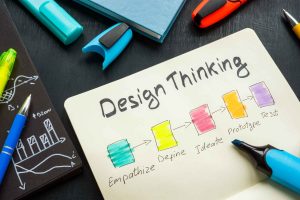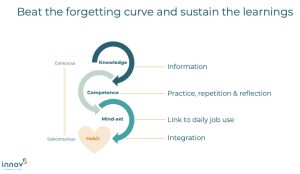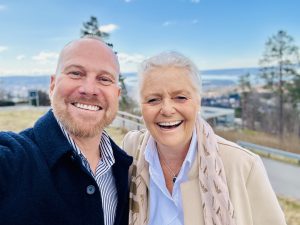
Designdrevet læringsutvikling som møte målgruppens behov
I en verden hvor forandringer skjer i raskt tempo, må læringsutvikling tilpasses hurtigere for å møte organisasjonenes krav om endring
Business insights and articles written by our team of world-class professionals

I en verden hvor forandringer skjer i raskt tempo, må læringsutvikling tilpasses hurtigere for å møte organisasjonenes krav om endring

I en verden mettet med AI-produsert innhold, hvordan kan vi som jobber med læring og utvikling fortsatt tilføre reell verdi?

Effektiv beslutningstaking er en nøkkelkompetanse for ledere.
Men våre fordommer og tidspress kan noen ganger gjøre dette utfordrende.

Virtuelle escape rooms kan sette fart på teamutvikling, samarbeid og kritisk tenkning. Innov8 Consulting AS har utviklet et virtuelt kurs

Økten fikk fantastiske tilbakemeldinger, noe som viser hvor viktig det er med kontinuerlig positiv forsterkning. Vi ble begeistret over å

Arnold Jung: En fallgruve ved endringsprosjekter er at de altfor ofte er toppstyrte, uten en effektiv involveringsprosess fra starten. Ledere presenterer ofte endringene som en ferdig pakke og forventer at de ansatte skal motta dem med åpne armer. Derfor er det kritisk at ledelsen anerkjenner at suksessfulle endringer kun kan oppnås gjennom proaktiv involvering og synlig tilstedeværelse.

I Europa er det et stort behov for å oppgradere digital kompetanse og i gjennomsnitt 45 % av arbeidstakerne vil trenge kompetanseheving i løpet av de neste årene. Det europeiske kompetanserammeverket (CEDEFOP) er et godt utgangspunkt for å kartlegge kompetanse og veikart for kompetanseheving av ansatte.
Innov8 Consulting AS
Org. Nr. 932 764 075
Heimdalsgata 35
0578 Oslo, Norway